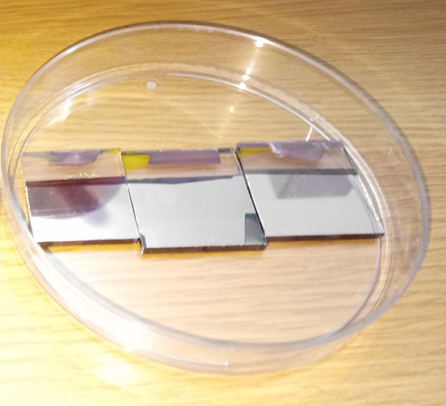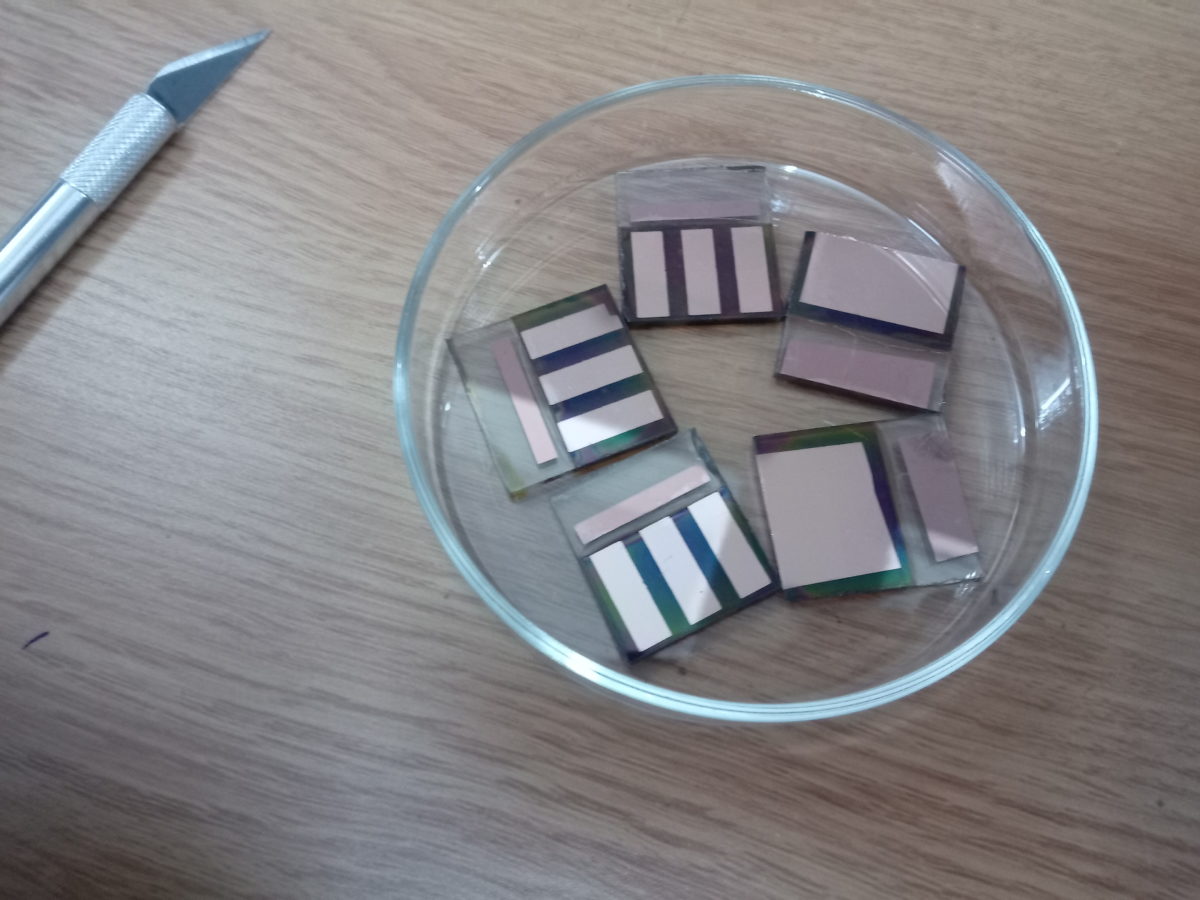A group of scientists from the Indian Institute of Technology Bhilai has developed a perovskite solar cell with an active area of 2cm2 and a back contact electrode made of copper (Cu). “Efforts are on to improve stability with new perovskite materials and reduce costs at every possible processing step,” researcher Nikhil Chander told pv magazine. “Our work has focused on reduction of costs by utilizing copper contacts instead of gold.”
The solar cell was fabricated via a two-step spin-coating technique with a fluorine-doped tin oxide (FTO) substrate; a methylammonium lead iodide (MAPbI3) perovskite layer sandwiched between a titanium oxide (TiO2) electron transport layer (ETL) and a hole transport layer (HTL) made of Spiro-OMeTA; and a copper conducting electrode. A similar device with a gold (Au) conducting electrode was also built, as a reference cell. “Copper or gold contact electrodes were deposited through a metal shadow mask by thermal evaporation to complete the cell fabrication process,” the Indian group specified.
The researchers explained that the copper, silver and aluminum used for metal contacts often lead to instability issues, as the diffusion of these metals with the Spiro-OMeOTAD or the perovskite layer has a chemical reaction that may be detrimental for the cell's performance. “Among others, inexpensive Cu has a comparatively higher work function with decent stability,” the academics said. The work function is the energy needed for a particle to come from the interior of a medium and break through the surface. This effect needs to be considered when connections between dissimilar metals in certain electronic circuits are made.
The scientists built a cell with an active area of 0.25cm and a larger one with an area of 2cm2 and their performance was measured under standard AM 1.5G radiation by using a 300-W xenon lamp as a light source.

Image: Indian Institute of Technology Bhilai
The 0.25cm2 cell showed an efficiency of 9.78%, an open-circuit voltage of 0.99 V, a short-circuit current density of 18.82 mA/cm2, and a fill factor of 53%. For comparison, the same device with the Au metal contact achieved an efficiency of 10.42%, an open-circuit voltage of 0.94 V, a short-circuit current density of 20.31 mA/cm2, and a fill factor of 54%. The device built with the Au contact electrode was also found to exhibit a low leakage current density, which is beneficial for the fill factor.
Popular content
When scaled up to the 2cm2 size, the cell showed a lower drop in the open-circuit voltage and a significant decrease in photocurrent. “The shunt resistance of both the Cu and Au-based devices decreased when the size of the devices was increased,” the research team emphasized. “It is an indication of increased shunting effects arising due to scaling-up of the device area.”
The cell fabricated with copper metallization showed an efficiency of 5.61%, and that based on gold, 5.92%. These efficiencies were tested over a seven-week period and the gold-based device was able to retain around 74% of its initial performance while the copper-based cell retained only about 35% of the initial efficiency. “After 14 days under ambient conditions, the color of the perovskite film looks even more faded,” it explained. “It is an indication of film degradation under the influence of air and moisture.” This degradation was responsible for a strong decrease in photocurrent values and the resulting fill factor drop.
The main conclusion of the research is that completely eliminating gold will not be immediately possible and, in this regard, the scientists recommend using a metal contact made of a thin layer of Au and a thicker, overlying Cu layer. “This will ensure that the perovskite layer is not in direct contact with copper, and the usage of gold is minimized,” the researchers stated. “In this manner, the usage of gold could be reduced by about 80%,” Chander told pv magazine.
The solar cell is described in the paper Stability study of large-area perovskite solar cells fabricated with copper as low-cost metal contact, published in Energy Research.
This content is protected by copyright and may not be reused. If you want to cooperate with us and would like to reuse some of our content, please contact: editors@pv-magazine.com.



Good work👍